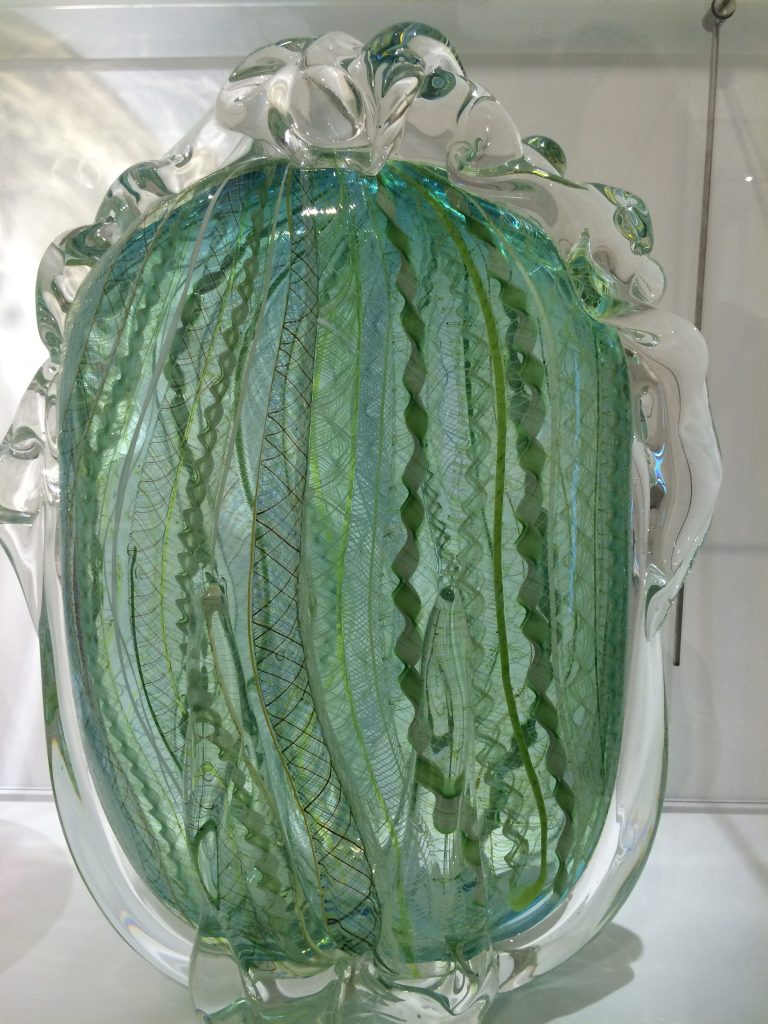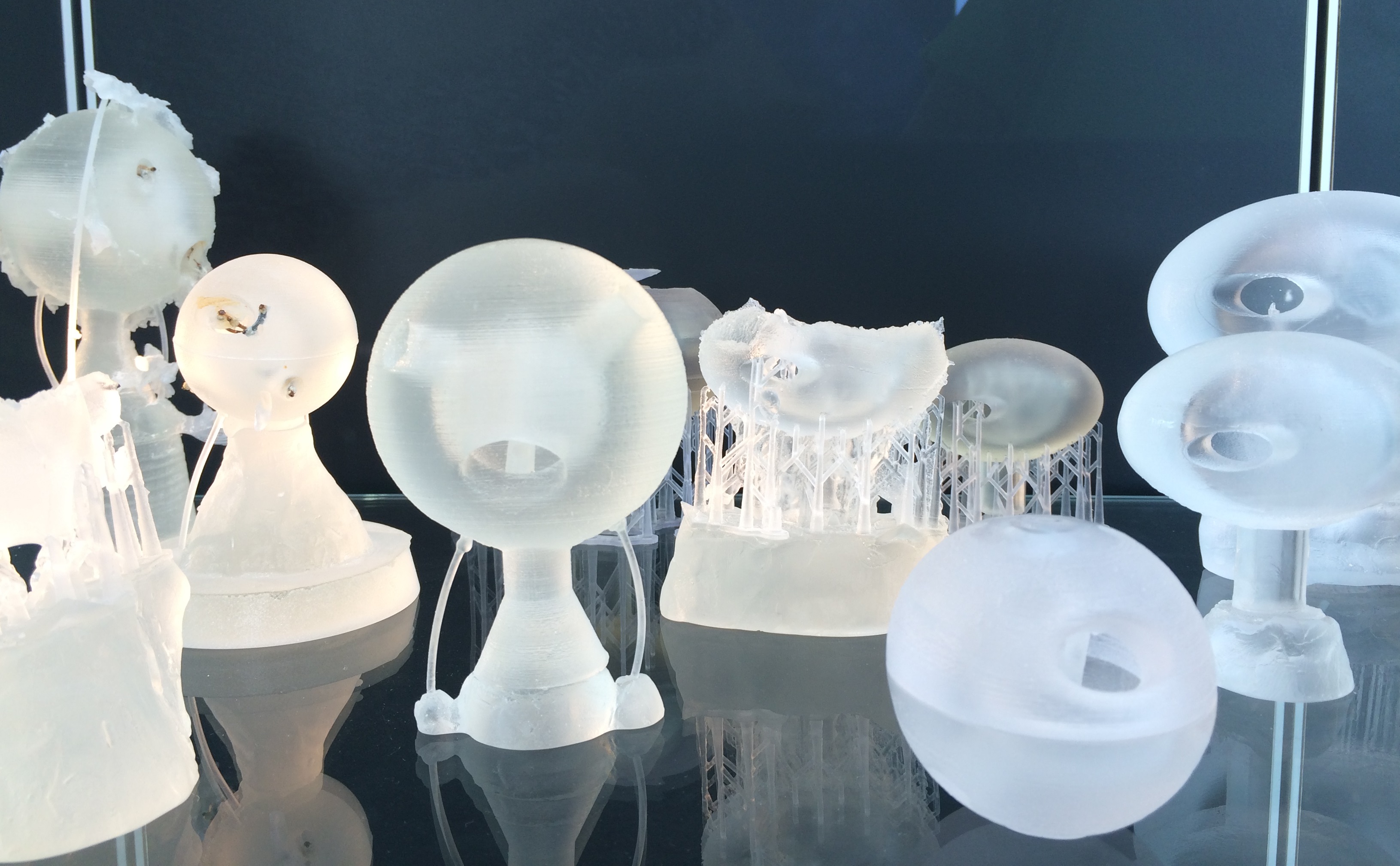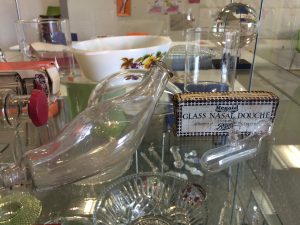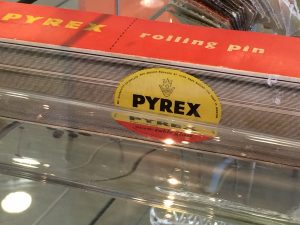I’ve been a regular visitor to the National Glass Centre for many years now. It celebrates the glass-making heritage of Sunderland in a unique building, with its unassuming, industrial entrance in direct contrast to its show-off riverside façade. I love the entrance which dips away from what is ostensibly the roof of the Centre, drawing you down into a progressively enclosed channel of claustrophobia before propelling you through the doors and back into the light.
In the early days I became a ‘friend’ and spent many happy hours there with my children in the great interactive gallery with its imaginative explanations of the history, the properties and the possibilities of glass.
 Verdant Seascape Sculpture, Fritz Dreisbach
Verdant Seascape Sculpture, Fritz Dreisbach
My recent visit was interesting. It’s been a good few years since I was last there, so I dragged my sister along for a trip out. She was quite surprised that I wanted to have a look around – thought I’d be more interested in heading straight to the cafe for a coffee. But I managed to stop her in her tracks and drag her around the recently renovated top deck of the centre, completed a couple of years ago after a £2.3 million overhaul.
Now, I might eat my words here, but I do believe that the National Glass Centre appeals to all ages. In the early days when it first opened, one side of the top floor was dedicated to an informative, hands-on, children-friendly exhibition. After a few years it started to look a little tired; worn out by little hands and big, hell bent on lifting flaps and turning cranks. It’s been replaced by a more subtle display of the history of glass making on the Wear – imaginatively done, with archive images and phone points to listen to the voices of workers from the Jobling, Pyrex and Corning factories of days past. There are peep-hole displays with a fine selection of locally made glass oddities, glass displays with front and back transparency to tempt you into the next section, and a fine rotunda-style film show. Sadly, the lighting in the rotunda was too intense and introductory film show, which offered much in the way of eye-candy with beautifully photographed glassmaking processes, was too weak to compete. I’d like to think they’ll have it sorted by the next time I visit.
Meanwhile there’s a dedicated kids’ area in the Learning Studio, adventure backpacks and family workshops. And of course, there is always that perennial enjoyment for kids – running across the 6cm thick glass roof while terrified parents look on – hoping to their own personal god that the glass is strong enough to hold their weight. Best ever fun my children had was lying on the glass roof making faces at the tea-drinking customers in the cafe eight metres or so below!
 The Good, the Bad & the Ugly, Andrew Miller
The Good, the Bad & the Ugly, Andrew Miller
The temporary exhibition when we visited really appealed to my sense of recycling – Andrew Miller’s ‘The Good, the Bad & the Ugly’. I love his philosophy behind the exhibition, a collection of discarded objects, apparently worthless, but considered for their history, their previous design credentials, their past emotional attachments and their ultimate rise in status as a work of art. I’m sure that there will be the odd observer who will look at Miller’s work and exclaim, ‘It’s just a load of old rubbish!’ – and yes, they’d be right, but the ‘rubbish’, like the work of Joseph Cornell to Ai Weiwei, has been thoughtfully combined to create a compelling piece of art.
Finally done upstairs and having paid our suggested, but not compulsory, donation of £5 each, my sister finally got me to the lower level and the much sought-after cup of coffee. The Glass Yard cafe here has won awards, and it’s a fine place to sit and watch the Wear wander past the huge panoramic windows on its last leg to the North Sea. It’s also next to the amazing gift shop, which has introduced me to a few glass artists in the past, including Peter Layton at London Glassblowing (where incidentally, I’ll be trying my hand at glassblowing in the new year. Exciting stuff!). As often happens, I managed to spend a wee amount on a piece made at the NGC, and you can actually wander down the corridor at the far corner of the shop and sit yourself down for spell of glassblowing voyeurism.
It’s great to see such artists at work moulding the glass to their own fancy, seemingly unfazed by the tremendous heat of the furnace (for lovers of eco-friendly facts, you’ll be happy to know that the heat from the furnaces is also used to heat the building). The NGC has had links with the University of Sunderland for some years now – it’s only fitting that a city so emphatically linked with glass-making is now teaching the next generation of artists.
The National Glass Centre sits on the north bank of the River Wear in Sunderland – entrance is free with a collection box for the generous.


